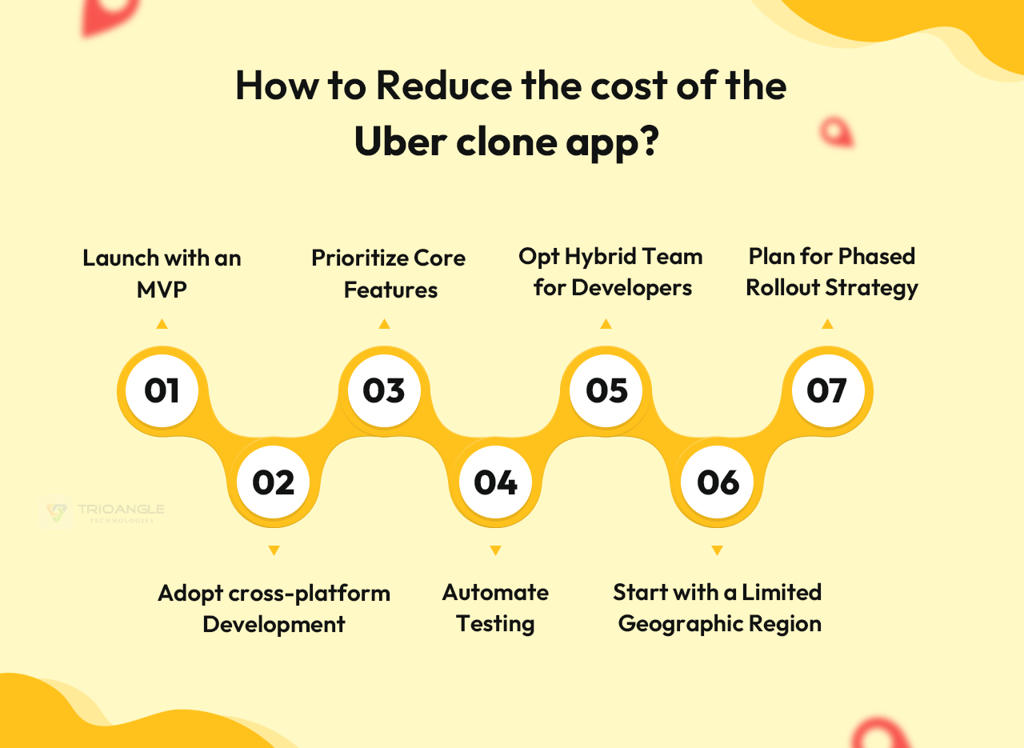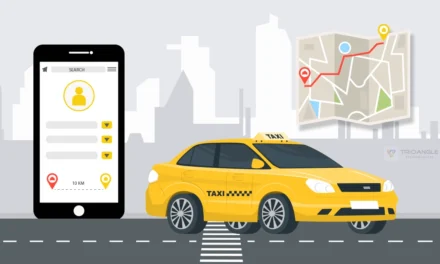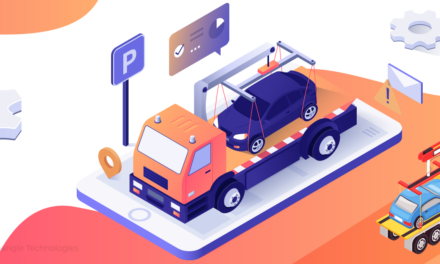Ride-hailing is a popular business in recent times. So, are you excited to start your journey on this? Amazing!
Launch your venture with an Uber clone to enter the market quickly and efficiently. Choose a reliable Uber clone script to customize features, design, and workflows that match your brand vision.
However, the cost of developing an Uber clone app varies depending on features, complexities, and many other aspects.
Let’s identify the key cost factors involved in developing an Uber clone app and explore effective strategies to reduce expenses for a cost-efficient build.
🚘Market Statistics of the Ride-Hailing App
- According to the reports, the global ride-hailing market is projected to cross $229.98 billion by 2030.
- In 2024, approximately 865 million individuals are expected to use Uber for at least one ride. Meanwhile, Uber’s core ridesharing business handled an impressive $68.9 billion in gross bookings in 2023.
What are the cost factors for building an Uber Clone?
The factors that influence the cost of Uber Clone app development are listed as follows,

Design and Feature development
👉Interface Crafting
An attractive layout easily captures the user’s attention!
Make sure to have your Uber clone script focuses on design, simplicity, and speed, guaranteeing a beautiful user experience.
Craft an intuitive flow so riders can book a ride in just two taps and drivers can accept and navigate without distraction.
The driver and rider apps both follow a consistent design language for familiarity and comfort across platforms.
👉Core powers & capabilities
The Uber Clone offers a comprehensive ride-hailing experience with features such as instantaneous ride booking, driver-rider live tracking, and optimized route calculation for faster pickups.
It supports multiple payment options, which include digital wallets and credit cards for secure transactions. Features like in-app chat and call enhance communication, while ride history and ratings build trust.
With in-app chat, fare estimation, and SOS alerts, the platform offers convenience and safety at every step.
Technology Development
👉Development Toolkit
Uber clone app is built using a modern and scalable tech stack to ensure high performance. A proper technical foundation is preferred to handle high traffic and real-time demands. The development Toolkit consists of,
Mobile Development: Kotlin for Android, Swift for iOS
Frontend Development: HTML, CSS,
Backend Development: Node.js
Database: MongoDB, PostgreSQL
Third-party integration: Maps and Payment integration
👉Developers and location
To strike a balance between quality and cost-effectiveness, a global distributed team is utilized. Here, qualified mobile app developers, UI/UX designers, and backend developers with expertise in building ride-sharing platforms are preferred.
Teams based in tech-focused regions bring strong expertise at competitive costs. They follow agile methodologies, ensuring flexibility and timely feature releases. The diverse skill sets across geographies enable 24/7 development cycles and excellent support post-launch.
👉Quality Assurance
Quality assurance, aka ‘Testing’, for an Uber clone app involves rigorous multi-stage testing to ensure a flawless user experience. Each feature, like GPS tracking, ride-booking, and payment, is validated under real-world conditions.
Manual tests and automated tests identify bugs early, while performance testing ensures smooth operation during high traffic.
So, it is important to rigorously test every feature before launch to catch real-world issues and ensure all scenarios run smoothly under heavy loads.
Operational Costs
👉Connected Ecosystem- Third-Party Apps
Integrating third-party services enhances the app’s overall functionality and user engagement. This includes payment gateways like Stripe, PayPal, or Razor Pay. Location tracking (Mapping services) such as Google Maps API, Mapbox with native iOS frameworks, and SMS or push notifications.
Social media logins simplify onboarding, while analytics tools provide insights into user behavior and trip patterns.
These integrations are implemented securely and efficiently through well-documented APIs, maintaining data consistency and seamless synchronization to ensure smooth communication between services.
This approach helps deliver a more connected and convenient experience for both riders and drivers.
👉Platform Access Cost
Publishing your Uber clone app on major platforms like the Google Play Store or the Apple App Store involves standard fees set by each store.
This fee varies between the platforms, and these fees cover access to updates, beta testing tools, and analytical dashboards.
Additionally, each store takes a commission on in-app purchases or payments made through the app. Managing these costs helps businesses budget effectively for launch and ongoing operations.
👉Market Your Uber Clone App
To successfully market your Uber clone app development, start by identifying and targeting local audiences where the demand for ride-hailing is high but competition is manageable.
To boost visibility, you can use digital marketing tools like Google Ads or social media campaigns, such as Instagram, Facebook, and Influencer collaborations.
Try to offer launch promotions such as referral bonuses and build trust through consistent branding, positive user reviews, and responsive customer support.
Over time, analyze user behavior and adapt marketing strategies to strengthen engagement and loyalty.
👉Post-Launch Care
Launching the app is just the first step! Yes, it is.
It is extremely important to keep your Uber clone service competitive and secure. Monitor server performance and deploy regular bug fixes immediately as they arise from user reports or internal checks.
Feedback from riders and drivers is continuously analyzed for improvement. Scheduled maintenance ensures long-term app stability, enhancing brand reputation and user satisfaction.
| Read also: Launching a Taxi business with an Uber clone |
Now that we know how to develop an Uber clone app, let’s explore how we can reduce the cost of building it.
How to Reduce the cost of the Uber clone app?
The tactics used to reduce the cost of the Uber clone app are listed in the upcoming section.

🎯Launch with an MVP
Begin with an MVP that focuses on important features like booking, payments, and tracking.
This approach typically assists in validating your Uber clone app idea, attracting early adopters, and minimizing development costs before scaling to a full-featured product.
Pros of this strategy
- Focus on important features and strategies
- Enables rapid launch
- Reduces development timeframe
🎯Adopt cross-platform Development
Using a cross-platform framework like React Native or Flutter can help build and deploy your Uber clone app on both iOS and Android from a single codebase.
This tactic eventually saves time and money compared to creating separate native apps for each platform.
Cut developer costs by not having separate teams for each platform. Cross-platform technology keeps maintenance and scaling affordable while meeting high-performance standards.
Pros of this strategy
- Reduces the need to create separate iOS and Android codebases, saving time and developer costs.
- Makes updates and fixes easier and quicker.
- Require fewer developers
🎯Prioritize Core Features
Firstly, keep your focus on developing and maintaining the core features like ride requests, secure payment flows, and location tracking.
Keeping an eye on key features helps riders and drivers complete trips smoothly. Then, you can focus on advanced tools like AI-based recommendations, dynamic pricing, optimized books, or a chatbot (24/7 assistance), and blockchain features for later launch.
Make sure to keep your first version simple and reliable without any errors, and deliver a high-quality, bug-free product without stretching resources during the Uber clone app development process.
Pros of this strategy
- Core features are focused and given importance
- Enhance clarity for development teams
- Eliminates the use of unwanted features
🎯Automate Testing
Automated testing tools are a cost-effective way to catch bugs, glitches, and errors without maintaining a large full-time QA team.
This process enables rapid, repeated testing of code changes, ensuring each update or new feature works as expected across all devices and OS. Incorporation of automated testing into your development pipeline, issues being detected earlier, which leads to fewer issues during the deployment process.
This reduces the manual testing hours and aids in launching a stable, reliable Uber clone app that is faster and at a lower recurring expense.
Pros of this Strategy
- Detects bugs earlier and ensures consistent performance
- Minimizes the time of manual testing
- This feature lowers maintenance costs
🎯Opt Hybrid Team for Developers
Adopt a hybrid team that combines specialized talent to create your Uber clone cost-effectively. A hybrid team, which combines onshore and offshore developers, reduces labor costs and delivers cost-effective solutions.
So, a hybrid team combines local expertise with more affordable remote talent, while a lean feature set focuses on core functionality to deliver an MVP.
Pros of this Strategy
- Offers flexibility and reduces costs
- Diversify the skill pool among the developers
- This reduces the risk of project delays across time zones
🎯Start with a Limited Geographic Region
Building an Uber clone app with a limited geographic region is a proven strategy for startups and established companies to manage and reduce costs.
By focusing on a smaller, defined area, a business can conserve capital, streamline operations, and deeply understand its target market before scaling up.
Pros of this strategy
- Reduces support and logistic costs
- This concentrates on brand-building efforts for greater impact
- The success and decline rate of the feature helps expand the Uber clone app
🎯Plan for Phased Rollout Strategy
Planning a phased rollout strategy helps reduce the cost of an Uber clone app by spreading out development and marketing expenses over time. Instead of building and launching everything at once, you release the app in stages, learning from each phase to make improvements.
This approach minimizes financial risk and avoids spending on unnecessary features early on. It also allows gradual scaling of resources and infrastructure based on actual user demand.
Overall, phased rollout ensures smarter investment and better budget control throughout the project lifecycle
Pros of this strategy
- Helps fix the problem step-by-step
- Assist in building resources and infrastructure carefully as your Uber clone app expands
These are some of the ways to keep up the cost of the Uber clone app. To make
💡Connect with Trioangle
To conclude, investing in an Uber clone app development offers a fast and cost-effective entry into the booming ride-hailing market. Using a reliable Uber clone script allows businesses to customize features, user experience, and workflows to cater specifically to their target audience.
Hope this blog has given you tips on how to build your robust and cost-effective Uber clone app. Along with it, the blog also tells you how to minimize the cost of building an Uber clone app in addition to its perks.
Want to build your Uber Clone app now? Make a call
Get in Touch



